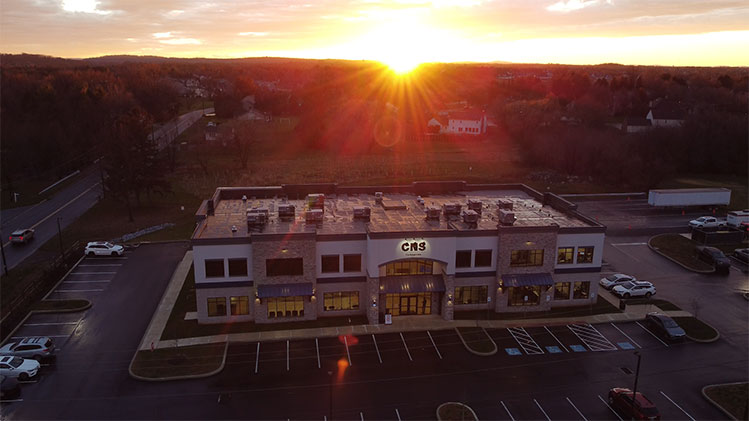Furry Friends Cause Trucking Border Delays At Canadian Border
To prevent reintroduction of rabies carried by dogs into the United States, new CDC regulations require proof of healthy pets at border crossing. Truckers who
We are a team of DOT Compliance and Licensing Professionals helping trucking and transportation companies remain safe, compliant, and profitable.
CNS or Compliance Navigation Specialists is DOT Compliance company that assists trucking and transportation companies remain DOT Compliant. We are part of a network of companies, CNS Companies, specializing in services related to the transportation, manufacturing, construction, service, education and medical industries.

A full-scale DOT Compliance Program managing a long haul carrier’s safety, compliance, licensing and more.
Learn more >>>
A DOT Compliance Program that keeps motor carriers compliant with the 6 Basic DOT Regulations required of all carriers.
Learn more >>>
Our Short-Haul/Construction Program is a full-scale program designed for private carriers that do not haul for-hire.
Learn more >>>
Our most comprehensive DOT Compliance Program, operating as your company’s off-site Safety Director or assisting your current safety personnel.
Learn more >>>
Our Non-CDL Program is a full-scale program managing safety, compliance, licensing and more for moving companies, couriers, landscapers, or any company subject to DOT regulations and does not employ CDL drivers.
Learn more >>>
Our DOT Audit Services cover a number of different types of DOT Audits that new and existing carriers will be subject to.
Our DOT Driver Services help trucking companies and carriers to stay compliant as they grow and hire more drivers.
Our DOT Vehicle Services focus on ensuring your vehicles are compliant with DOT Regulations, which is just as important as your drivers.
Our DOT Services for Special Carriers focus on companies outside of the typical motor carrier, like HAZMAT, Passenger and Bus Carriers.
CNS is part of a group of companies that offer other necessary services for the trucking and transportation industry, such as Commercial Trucking Insurance, CDL Training, Online Training Course, and even Healthcare.
Our DOT Licensing Services will cover you whether you are an existing company or just starting a trucking company. Our DOT Licensing Specialists can help you get up and running and in days with your DOT number, MC Authority, EIN, UCR, IFTA, 2290 HVUT, Fuel Taxes and can even set you up to get your Commercial Driver's License (CDL) with CNS Driver Training Center.
Our DOT Licensing Specialists will help you with every aspect of starting a trucking company. All you need to do is choose a name for your trucking company.
You will need to ensure your DOT Number, MC Authority, Vehicle Registration, etc. is all set up properly when you start your trucking business.
Our Licensing Specialists can help with all aspects of filing and renewing licenses, fuel taxes, etc.
CNS is part of a group of companies that offer other necessary services for the trucking and transportation industry, such as Commercial Trucking Insurance, CDL Training, Online Training Course, and even Healthcare.
To prevent reintroduction of rabies carried by dogs into the United States, new CDC regulations require proof of healthy pets at border crossing. Truckers who
CNS or Compliance Navigation Specialists is DOT Compliance company that assists trucking and transportation companies remain DOT Compliant. We are part of a network of companies, CNS Companies, specializing in services related to the transportation, manufacturing, construction, service, education and medical industries.
CNS Companies is a network of companies specializing in services related to the transportation, manufacturing, construction, service, education and medical industries. Our DOT Compliance division is handled by Compliance Navigation Specialists, CNS Insurance handles Commercial Truck Insurance, CDL training is managed by the CNS Driver Training Center and healthcare is managed by CNS Occupational Medicine.
We are a team of DOT Compliance and Licensing Professionals helping trucking and transportation companies remain safe, compliant, and profitable.
CNS or Compliance Navigation Specialists is DOT Compliance company that assists trucking and transportation companies remain DOT Compliant. We are part of a network of companies, CNS Companies, specializing in services related to the transportation, manufacturing, construction, service, education and medical industries.

A full-scale DOT Compliance Program managing a long haul carrier’s safety, compliance, licensing and more.
Learn more >>>
A DOT Compliance Program that keeps motor carriers compliant with the 6 Basic DOT Regulations required of all carriers.
Learn more >>>
Our Short-Haul/Construction Program is a full-scale program designed for private carriers that do not haul for-hire.
Learn more >>>
Our most comprehensive DOT Compliance Program, operating as your company’s off-site Safety Director or assisting your current safety personnel.
Learn more >>>
Our Non-CDL Program is a full-scale program managing safety, compliance, licensing and more for moving companies, couriers, landscapers, or any company subject to DOT regulations and does not employ CDL drivers.
Learn more >>>
Our DOT Audit Services cover a number of different types of DOT Audits that new and existing carriers will be subject to.
Our DOT Driver Services help trucking companies and carriers to stay compliant as they grow and hire more drivers.
Our DOT Vehicle Services focus on ensuring your vehicles are compliant with DOT Regulations, which is just as important as your drivers.
Our DOT Services for Special Carriers focus on companies outside of the typical motor carrier, like HAZMAT, Passenger and Bus Carriers.
CNS is part of a group of companies that offer other necessary services for the trucking and transportation industry, such as Commercial Trucking Insurance, CDL Training, Online Training Course, and even Healthcare.
Our DOT Licensing Services will cover you whether you are an existing company or just starting a trucking company. Our DOT Licensing Specialists can help you get up and running and in days with your DOT number, MC Authority, EIN, UCR, IFTA, 2290 HVUT, Fuel Taxes and can even set you up to get your Commercial Driver's License (CDL) with CNS Driver Training Center.
Our DOT Licensing Specialists will help you with every aspect of starting a trucking company. All you need to do is choose a name for your trucking company.
You will need to ensure your DOT Number, MC Authority, Vehicle Registration, etc. is all set up properly when you start your trucking business.
Our Licensing Specialists can help with all aspects of filing and renewing licenses, fuel taxes, etc.
CNS is part of a group of companies that offer other necessary services for the trucking and transportation industry, such as Commercial Trucking Insurance, CDL Training, Online Training Course, and even Healthcare.
To prevent reintroduction of rabies carried by dogs into the United States, new CDC regulations require proof of healthy pets at border crossing. Truckers who
CNS or Compliance Navigation Specialists is DOT Compliance company that assists trucking and transportation companies remain DOT Compliant. We are part of a network of companies, CNS Companies, specializing in services related to the transportation, manufacturing, construction, service, education and medical industries.
CNS Companies is a network of companies specializing in services related to the transportation, manufacturing, construction, service, education and medical industries. Our DOT Compliance division is handled by Compliance Navigation Specialists, CNS Insurance handles Commercial Truck Insurance, CDL training is managed by the CNS Driver Training Center and healthcare is managed by CNS Occupational Medicine.

If you are new to DOT regulations, these drug and alcohol testing requirements can be a bit confusing.
DOT auditors are letting us know that one of the most common violations they are seeing right now are CDL drivers not enrolled in a drug and alcohol testing program (or owner-operators working with a consortium), or the company is not registered or using the CDL Clearinghouse where DOT drug and alcohol violations are stored.
This became evident when a new carrier has their New Entrant Audit, which is required in the first 6-12 months of operation, and the auditor finds these mistakes.
The purpose of this article is to help drivers and carriers understand the differences between a Drug and Alcohol Consortium and the CDL Drug and Alcohol Clearinghouse, understand their requirements, and figure out which you need to use if any.
What is a DOT Consortium?
Let’s start with the basics.
A DOT Consortium is a required DOT Drug and Alcohol Testing Program for companies with any employee operating a Commercial Motor Vehicle (CMV) that requires a CDL in intrastate or interstate commerce.
“Qualified employees” include those who:
This DOT drug and alcohol testing program must test “qualified employees” for:
Given the complexity of the DOT’s drug and alcohol testing requirements, most companies hire a Consortium/Third-Party Administrator (C-TPA) to help manage their drug testing program. Additionally, owner-operators must register with a consortium if they meet the requirements above and participate in the Consortium’s random testing pool.
Companies should look for a consortium, like CNS, that meets the DOT’s mandatory requirements for the following features:
What is the CDL Clearinghouse?
On January 6, 2020, the FMCSA launched the CDL Clearinghouse, an online database where CDL driver drug and alcohol testing violations and return-to-duty information will be stored and searched.
The purpose of the CDL Clearinghouse is to prevent job hopping of CDL drivers with positive drug and alcohol test results, refusal to test or information on a driver’s return-to-duty process.
Information in the Clearinghouse database will include:
DOT Consortium
A DOT Consortium is required for any owner-operator who:
Though not required, most companies that have “qualified employees” hire a Consortium to help manage their drug and alcohol testing program.
Clearinghouse
The FMCSA Clearinghouse database will include drug and alcohol testing violations for CDL drivers operating a CMV that has a gross weight greater than 26,000 pounds, has more than 15 seatbelts or is hauling anything requiring DOT HAZMAT placards.
To use the database, employers and some drivers are required to register to the Clearinghouse.
This includes:
DOT Consortium
Most companies are not required to be enrolled in a consortium.
Single owner-operators are the only companies that must be enrolled in a DOT consortium. The reason for this is that they must follow certain requirements in the drug testing procedures.
Though not required, most companies that have “qualified employees” still hire a Consortium to help manage their drug and alcohol testing program.
This is because DOT drug testing programs require:
Clearinghouse
Since this is a newer regulation that will not be fully implemented until 2023, there are requirements for employers and some drivers.
We want to stress that these rules do have consequences if not followed. Violations can occur if:
Let’s break this down further.
For employers, there are three main requirements.
For CDL drivers, there are three main reasons they need to register to the DOT clearinghouse.
At CNS, our consortium provides drug screening management, coordination, and completion from the collection site, laboratory analysis, medical review, and record-keeping compliance.
Become a member today no matter how many drivers you need to be enrolled or where you are located across the country.
With over 10,000 collection sites nationwide, our dependable turnaround times are often released in 24 to 48 hours.
Our consortium clients have an online client portal where they have access to order their own chain of custody forms for a drug test, search collection sites near a driver location, see status of a chain, and more.

To prevent reintroduction of rabies carried by dogs into the United States, new CDC regulations require proof of healthy pets at border crossing. Truckers who

This means future regulations will “become clearer” or “stuck in the courts” for years. On June 28, 2024, the U.S. Supreme Court overturned the Chevron

ATRI’s Research Advisory Committee (RAC) selected a diverse set of research priorities designed to address some of the industry’s most critical issues including workforce development,

CNS can help with our Roadside & Incident Report Management service where a team of DOT Compliance Specialists will assess the Department of Transportation safety records
Our DOT Compliance Programs ensure it is your top priority and keeps your business running.
Receive the latest transportation and trucking industry information about FMCSA and DOT Audits, Regulations, etc.

To prevent reintroduction of rabies carried by dogs into the United States, new CDC regulations require proof of healthy pets at border crossing. Truckers who

This means future regulations will “become clearer” or “stuck in the courts” for years. On June 28, 2024, the U.S. Supreme Court overturned the Chevron

ATRI’s Research Advisory Committee (RAC) selected a diverse set of research priorities designed to address some of the industry’s most critical issues including workforce development,
Join our monthly newsletter and stay up-to-date on trucking industry news and receive important compliance and licensing tips.
Join our monthly newsletter and stay up-to-date on trucking industry news and receive important compliance and licensing tips.